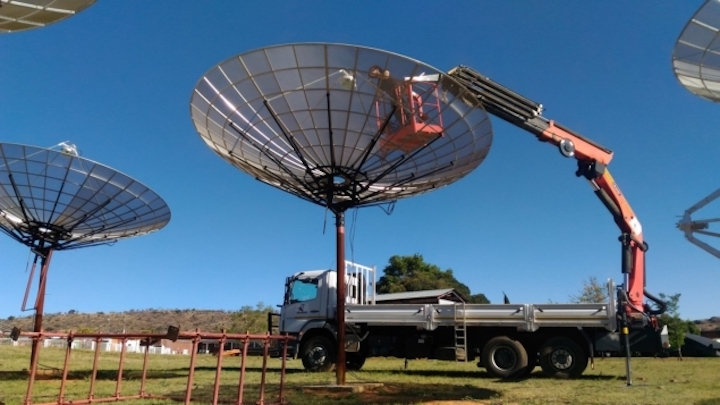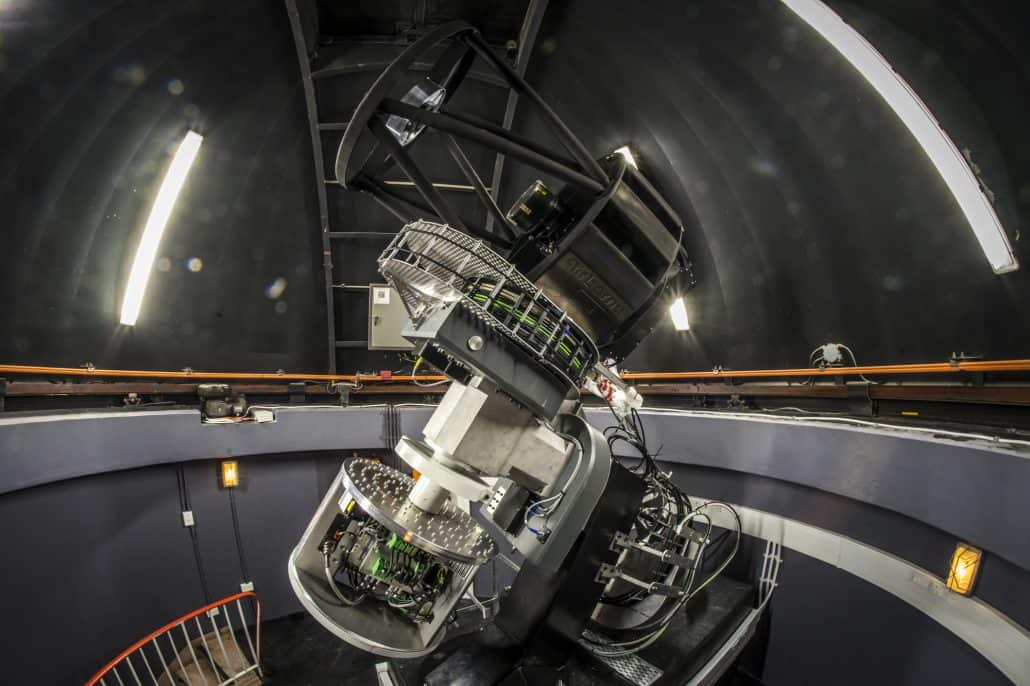24.08.2018

South Africa has given the go-ahead for a radio telescope that will study dark energy, detect fast radio bursts as well as track neutral hydrogen gas on cosmic scales. Costing R70 million ($5m), the Hydrogen Intensity and Real Time Analysis eXperiment (HIRAX) will consist of 1024 dishes, each 6 m in diameter, located in the Karoo region of South Africa and will map about a third of the sky during four years of operation.
One of the main aims of HIRAX will be to pinpoint the location of fast radio bursts – high-energy astrophysical phenomenon that consist of millisecond radio pulses. “The origin of these flashes is still a mystery,” says Kavilan Moodley, HIRAX team principal investigator. “They’re hard to detect and localize since they’re so brief and most telescopes only observe a small region of the sky.” HIRAX’s large field of view will allow astronomers to observe large portions of the sky daily so, in principle, when the flashes happen the instrument will be more likely to see them.
[HIRAX and MeerKAT] could give us a fuller view of some phenomena than one telescope alone could do
Fernando Camilo
Since 2016 researchers have been testing eight prototype dishes at the Hartebeesthoek Radio Astronomy Observatory (HartRAO) outside of Johannesburg. Yet during investigations they identified the need to limit interference so changed the focal ratio – a ratio of the telescope’s focal length to its diameter – of the dishes to 0.25 compared to 0.38.
Engineers are now working to design and build four new prototypes with the smaller focal ratios to install at HartRAO by the end of the year. Engineers will then construct an eight-dish prototype followed by a 128-dish “pathfinder” in the Karoo later next year. A further 512 dishes will be added to the array in early 2020 with the remainder being put in place later that year.
A fuller view
When fully operational, HIRAX will require a petascale computer to process up to 6.5 terabits of data per second as well as infrastructure to compress this data by a factor of 50–100. Moodley adds that the project will lead to many benefits for South Africa such as being used to train students, attract foreign scientists as well as increase collaboration with industry.
Although HIRAX has been developed independently from other radio telescopes such as the MeerKAT radio telescope also located in the Karoo, there will be some overlap in what they study. “Both telescopes could give us a fuller view of some phenomena than one telescope alone could do,” says Fernando Camilo, chief scientist at the South African Radio Observatory. HIRAX’s lowest operating frequency is 400 MHz – much less than MeerKAT’s 580 MHz – and according to Camilo that will let it see further back in time.

South Africa opens new ‘eye’ on southern skies
The project has so far secured $1.4m from the University of KwaZulu Natal and South Africa’s National Research Foundation. Officials are now looking for funding sources for the remainder of the cash to complete the project.
South Africa has inaugurated a new optical telescope that will scan the southern sky for supernovae and other extreme events. The 65 cm MeerLICHT (meaning “more light” in Dutch) telescope, which features a 110 megapixel camera, was inaugurated in late May at the South African Astronomical Observatory, near Sutherland.
The telescope will team up with the MeerKAT radio-telescope array – the country’s precursor to the Square Kilometre Array, which is currently being built – to search for cosmic explosions in both the radio and optical data and get a better understanding of the physics of these energetic events.
“Such a coupling of an optical telescope to a radio telescope has not been done before on this scale,” says Patrick Woudt, co-principal investigator of the MeerLICHT telescope, who is based at the University of Cape Town. “To match the wide field of view of the MeerKAT telescope, we required a special optical design of the telescope, which gives us nearly three square degrees on the sky with a single detector.”
Developing human capital and multi-wavelength astronomy is a great strategy
Arvind Vimal Ramessur
Woudt adds that MeerLICHT will also serve as a prototype for an array of three similar telescopes that will be placed at an observatory in Chile to search for optical counterparts of gravitational waves.
A better perspective
Arvind Vimal Ramessur, an astronomer based at the Hartebeesthoek Radio Astronomy Observatory near Johannesburg, who is not part of the project, says the launch of MeerLICHT is another milestone in astronomy, especially for Southern African astronomers and engineers. “Observations of the sky made with different wavelength will give us a better perspective and provide us with additional information of any sources of interest,” he says. “Developing human capital and multi-wavelength astronomy is a great strategy. Such endeavours mean more training programmes and projects for our young Southern African graduates to pursue research in astronomy and engineering.”
The MeerLICHT consortium is a collaboration between the European Research Council, the Netherlands Research School for Astronomy, Netherlands Organisation for Scientific Research, South African Astronomical Observatory and the universities of Amsterdam, Cape Town, Manchester, Oxford and Radboud Nijmegen.
Quelle: physicsworld
